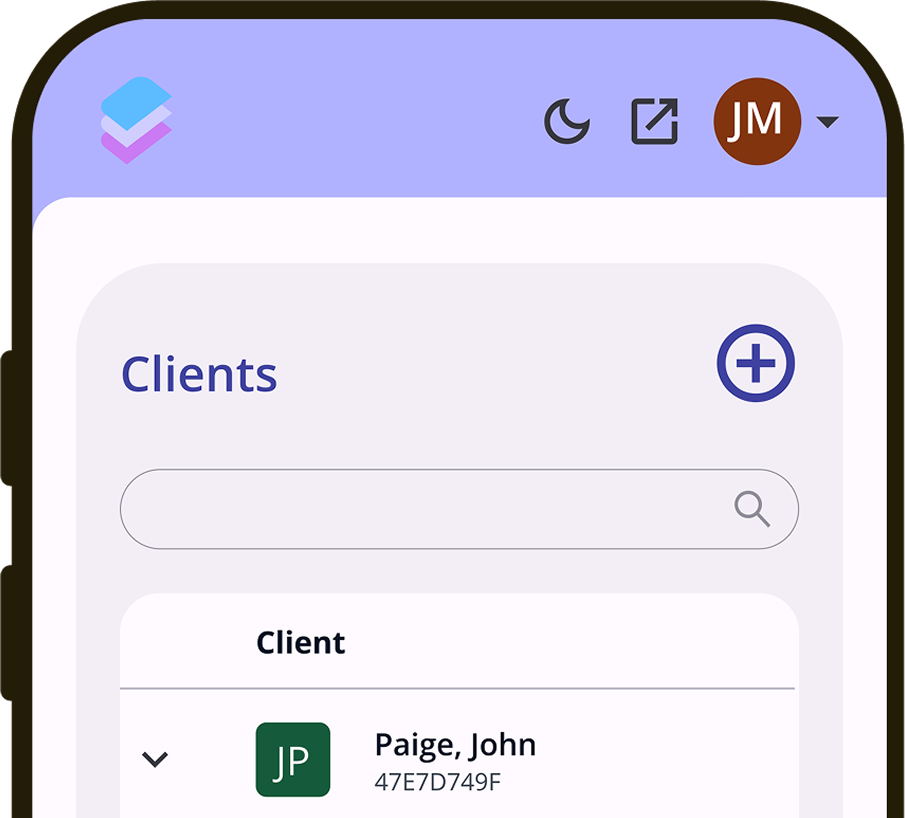
The role of a case manager is demanding and exhilarating alike.
When completing client intake, assessment, referrals, and other case management tasks, it’s important to make the process as simple as possible for both the case manager and the client. This improves data quality and efficiency by streamlining workflows, but more importantly, it means removing unnecessary and distracting steps to help you personalize your interactions with clients. The more you can focus on them and not your software, the better you can serve their needs.
In that sense, you need an HMIS that works for you, one that’s responsive each step of the way. But what exactly does that look like?
It looks like preventing duplicate profiles for the same client from being created in the first place. It looks like building in tooltip text guides for case managers to make sure information is input correctly the first time. And it looks like cascading data from one screen to another, so that clients don’t have to answer the same question multiple times, especially if it relates to a deeply personal or traumatic event. Such features also reduce the time required to complete new forms and, instead, increase your opportunities to build rapport.
Prioritizing these features when researching HMIS solutions will help you build a personalized, compassionate, and holistic workflow for your case management services.
Must-Have Case Management Features
Like anything else considered for an HMIS, effective case management starts with user-friendliness. The more efficiently and easily you can input information, the less you’ll have to fiddle with your software and the better the experience will be for your clients.
The features defined below streamline processes and ensure accuracy.
Duplicate Client Check:
Given the nature of the field, there’s a chance a client has already been entered into your HMIS, and you may not know it. With a duplicate client check, you will. The HMIS will alert you if a client with the same name or social security number exists in the system. It saves users time and provides greater context for whatever services the client might need.
Tooltip Text:
Tooltip text on intake forms can help explain in more detail what a particular question is asking. This ensures the questions are answered correctly the first time. Tooltip text benefits clients, but it can also support case managers as well. For example, you could provide suggestions for case managers on how to ask difficult questions with a tooltip text box that offers advice on phrasing in a compassionate way.
Field Constraints or Conditional Display Logic:
When you have built-in field constraints or conditional display logic on your HMIS, only information relevant to the client is displayed. For example, on a field such as Veteran Status, you could configure certain fields to only appear if the Veteran Status field answer is ‘Yes,’ and keep them hidden if the response is ‘No.’ In this way, you can skip questions that are irrelevant to your client and spend more time on meaningful interactions.
Auto-Cascading Data:
Auto-cascade features allow information to auto-populate to other enrollment and assessment screens after a client has answered a question. For example, you could enable users to pre-populate a client's HUD assessment with information from past assessments across all agencies. Not only does this streamline data entry, but it also reduces the number of times a client will have to re-answer questions that might evoke past traumas.
Alert Messages:
Alert messages based on display logic add more protections to your data quality as you go. Here’s a possible use case: If you’re answering a series of questions about Disabling Conditions, you could have an alert message appear if a client’s answers are inconsistent. Say, for instance, the answer is ‘No’ to Disabling Conditions, but then ‘Yes’ is selected under Physical Disability or Developmental Disability in the same section. A label would appear to flag the conflicting responses and allow you to go over the questions a second time.
Tracked Characteristics:
Beyond intake and assessment forms, when it comes to making referrals, case managers can use a ‘tracked characteristics’ feature. This is a set of conditions tied to assigned fields and associated with a client referral. Referrals can then be filtered based on characteristics. For example, if a program prioritizes veterans for housing, you can create a tracked characteristic using the field ‘veteran’, allowing staff members to filter pending referrals to include only veterans.
Auto-Assign Goals & Service Placements:
As soon as you enroll clients into a program, this feature automatically assigns services and establishes goals for them. In doing so, you’ll save time on completing these tasks on an individual client basis and ensure a client is enrolled in at least a minimum number of helpful services.
Case Management Made Easy With Clarity Human Services
Beyond the benefit to clients and case managers, what do all of these features have in common? You’ll find them in Clarity Human Services.
Clarity Human Services is Bitfocus’s HMIS offering. As system administrators themselves, the company has developed features and functionality that emphasize user experience and produce measurable results. Clarity is also customizable. With Clarity, you can build a case management workflow that best meets your community’s needs. You’ll improve the quality of your data in the system by minimizing errors, fostering greater collaboration with other agencies and care providers, and open up time to spend with the client.
But for all the operational improvements, the biggest payoff for Clarity users is a human one. By optimizing processes, you can spend more time with the clients themselves. That makes an immediate difference as well as a long-term one.
